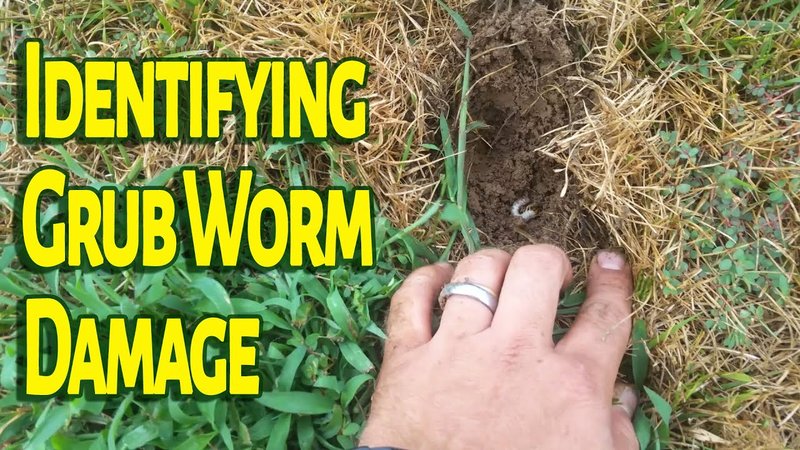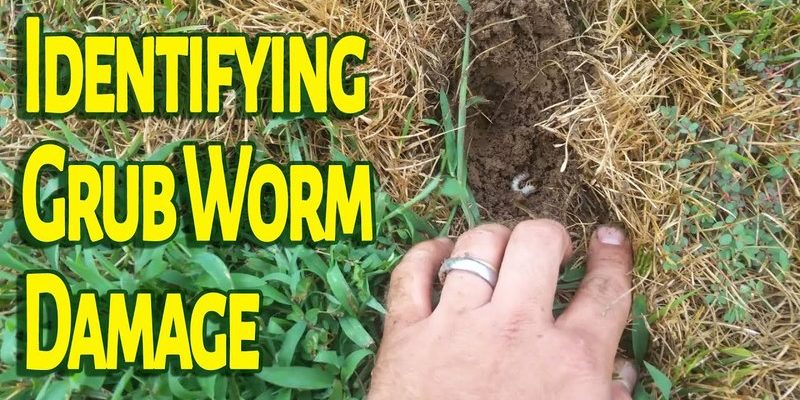
Watching birds in action can feel a bit like seeing nature’s own cooking show. They flap around, sizing up the ground like chefs inspecting fresh ingredients. And those grub worms? They’re often hiding just beneath the surface, waiting for their moment. If you’ve noticed changes in your yard’s ecosystem—like unusual holes or a sudden onslaught of birds—you might just have a feast happening right under your feet!
Understanding Grub Worms: The Hidden Delicacies
Before we dive into how to spot the signs of birds feeding on grub worms, it’s essential to understand what these little worms are. Grub worms are the larvae of various beetle species, including Japanese beetles and June bugs. They thrive in warm, moist soil and often feast on grassroots, which can lead to patchy lawns.
If you have a healthy lawn, odds are, you’ve got a few grub worms lurking about. Birds are naturally drawn to them, thanks to their protein-packed bodies. Think of them as nature’s perfect snack. In fact, many birds, like robins and sparrows, are particularly skilled at sniffing out these wriggly goodies. So, if you notice your yard is bustling with birds, it’s a good sign that something delicious might be going on underneath the grass!
Signs of Bird Activity in Your Yard
If birds are feeding on grub worms, you’ll likely see a few telltale signs. First and foremost, an increase in bird activity can indicate there’s a banquet happening. Birds will often congregate in areas where there’s plenty of food, so if you’ve suddenly got a crowd of them, something’s up!
Look for changes in their behavior—like them scratching at the ground or tilting their heads as if trying to listen for their next meal. You might also see birds taking a few hops and pauses, scanning the environment before diving in for a bite. It’s like they’re on a treasure hunt, and the reward is right beneath their feet.
Physical Signs: Holes and Damage to Your Lawn
One of the most obvious indications that birds are feeding on grub worms in your yard is the physical damage to your lawn. If you start to see holes or patches of dead grass, it might be time to investigate. Birds will scratch at the ground, digging out the grubs, which can leave noticeable divots in your yard.
You may also find turf that looks uneven or has been pulled up. This can be a sure sign that birds have been busy unearthing these tasty morsels. If you notice brown patches and a parade of birds, you might just have a grub worm buffet right at home.
The Role of Seasonality
Birds feeding on grub worms is often seasonal. In the late spring and early summer, many beetles lay eggs in the soil, which hatch into grub worms. As these grubs grow, birds take full advantage of the abundance. So, while you might see significant bird activity in your yard during this time, it’s good to remember that this pattern can change with the seasons.
In the fall, when grubs have reached their full size, you’ll likely see birds returning to feast. They know it’s the perfect time to stock up before winter arrives. So, keep your eyes peeled during these transitional months, as this can be the peak feeding time for our feathered friends.
Common Bird Species That Love Grub Worms
Not all birds are after grub worms, but several species have a particular affinity for them. Here’s a quick list of some common birds you might observe:
- Robins: These iconic birds are known for their bright orange bellies and are often seen pecking around lawns.
- Starlings: With their iridescent feathers, they’re not just beautiful; they’re also skilled at finding grubs.
- Sparrows: Small but mighty, sparrows will take advantage of any food source available, including grubs.
- Blue Jays: Known for their intelligence, blue jays will dig around for food when they need a snack.
If you spot these birds in your yard, the chances are high that they’re on the prowl for grubs.
How to Encourage Birds in Your Yard
If you enjoy watching birds and want to encourage them to visit your yard more often, there are a few simple steps you can take. Here are some tips to create a welcoming environment:
- Install Bird Feeders: While grub worms are a treat, providing regular bird food can keep birds coming back. Add a mix of seeds to attract various species.
- Plant Native Vegetation: Native plants provide natural habitats and can attract insects, which in turn attract more birds.
- Maintain a Healthy Lawn: Even though grubs can damage your lawn, keeping it healthy ensures that birds have a steady food source. Consider using organic methods to manage pests.
- Limit Pesticides: Chemicals can harm birds and eliminate their food sources. Opt for natural pest control methods instead.
These simple practices can turn your yard into a bird-friendly haven.
The Benefits of Birds Feeding on Grub Worms
Having birds feed on grub worms in your yard isn’t just entertaining; it also benefits your lawn and the ecosystem. Birds help keep the population of pest species like beetles under control, preventing potential damage to your grass and plants.
Plus, their presence can indicate a healthy balance in your local ecosystem. Seeing birds thriving means your yard is likely a good habitat, not just for them but for numerous other species. So, by encouraging birds to visit, you’re contributing positively to your local environment.
In essence, birds are nature’s little caretakers. They help maintain a natural balance, all while providing you with delightful moments of observation.
In conclusion, spotting signs that birds are feeding on grub worms in your yard can be both fascinating and beneficial. As you monitor the activity of our feathered friends, remember that you’re not just observing nature—you’re playing a role in it. So, grab a cup of coffee, sit back, and enjoy the show!

